Understanding Synthetic Marijuana Addiction
Learn About Synthetic Marijuana Abuse & Addiction
Contrary to false statements implying that it is a safe alternative to natural marijuana, synthetic marijuana is actually a dangerous substance that can produce a range of negative outcomes. This drug interacts with the same areas of a user’s brain that are impacted by THC, which is the primary psychoactive component of natural marijuana. However, the effects of abusing synthetic marijuana, which is also known as spice or K2, can be more intense, can last longer, and can inflict more damage than what usually results from abusing natural marijuana.
Because the chemicals in synthetic marijuana can vary from batch to batch, it is impossible to predict how a person’s body will react to any given dose. As a result, synthetic marijuana abuse has led to increasing numbers of overdoses, hospitalizations, and even deaths.
In addition to putting themselves in danger of the immediate damage that can result from one experience with synthetic marijuana, individuals who use this unpredictable substance also risk the onset of a wide range of potential long-term effects that the relative newness of this drug has thus far prevented researchers from fully understanding. However, treatment can provide the skills necessary to live a life free of an addiction to synthetic marijuana.
Statistics
Statistics for Synthetic Marijuana Abuse
Experts estimate that more than one in 10 high school seniors in the United States have abused synthetic marijuana at least once in the past 12 months, with male students abusing this substance at a higher rate than female students.
From 2011 to 2014, the American Association of Poison Control Centers (AAPCC) documented 18,548 cases involving synthetic marijuana abuse, an average of 4,637 cases per year. In just the first four months of 2015, the AAPCC had already recorded 2,413 cases related to synthetic marijuana.
According to the Drug Abuse Warning Network (DAWN), synthetic marijuana is a contributing factor in more than 11,000 visits to emergency rooms each year. More than 75 percent of these ER visits involved male patients between the ages of 12 and 29.
Causes & Risks
Causes & Risk Factors of Synthetic Marijuana Addiction
Considerable research into substance abuse and substance use disorders indicates that most cases are the result of a combination of genetic and environmental influences, as are described in the following:
Genetic: People whose parents or siblings have struggled with a substance use disorder are more likely to have similar problems than are people whose family history does not include drug abuse or addiction. Also, advances in DNA research have allowed scientists to identify several individual genes and gene clusters that appear to be influential in determining whether or not a person will develop a substance use disorder.
Environmental: People who grow up in homes or neighborhoods where substance abuse is common are more likely to abuse drugs than are people who were raised in drug-free environments. Other environmental factors that can lead to substance abuse include abuse, neglect, stress, and associating with friends or colleagues who engage in recreational drug abuse.
Risk Factors:
- Being between the ages of 12 and 29
- Being male
- Having a family history of substance use disorders and/or mental illness
- Exposure to substance abuse at a young age
- Lacking effective parental involvement during childhood
- Experiencing trauma
- Having poor stress-management skills
- Living in poverty
- Living or working in a high-stress environment
Signs and Symptoms
Signs & Symptoms of Synthetic Marijuana Addiction
The following signs may indicate the presence of synthetic marijuana abuse:
Behavioral symptoms:
- Declining performance at work or in school
- Frequent unexplained absences from work or school
- No longer grooming and attending to personal hygiene
- Secrecy, lying, and/or other deceptions regarding one’s actions and whereabouts
- No longer participating in events, activities, or issues that were once important
- Abandonment of friends for new peer group
Physical symptoms:
- Increased heart rate and/or blood pressure
- Numbness in extremities
- Watery or bloodshot eyes
- Muscle spasms
- Excessive sweating
- Nausea
Cognitive symptoms:
- Confusion and disorientation
- Psychosis
- Depersonalization
- Hallucinations
- Paranoia
Psychosocial symptoms:
- Mood swings and changes in demeanor
- Agitation and irritability
- Profound sense of anxiety and/or depression
Effects
Effects of Synthetic Marijuana Abuse
The following are known to be among the potential effects of synthetic marijuana abuse:
- Brain damage
- Cardiac arrest
- Stroke
- Diminished performance in school or at work
- Legal and financial problems
- Family dysfunction
- Damaged interpersonal relationships
- Suicidal ideation and attempts
- Death
Co-Occurring Disorders
Synthetic Marijuana Addiction and Co-Occurring Disorders
The following are among the conditions that have been known to afflict individuals who are also struggling with the compulsion to use synthetic marijuana:
- Anxiety disorders
- Bipolar disorder
- Depressive disorders
- Post-traumatic stress disorder (PTSD)
- Attention-deficit/hyperactivity disorder (ADHD)
- Oppositional defiant disorder (ODD)
- Other substance use disorders
Withdrawal & Overdose Effects
Effects & Symptoms of Withdrawal from Synthetic Marijuana
Effects of synthetic marijuana withdrawal: When a person has become dependent on synthetic marijuana, abruptly stopping or drastically reducing the use of that drug will likely result in the onset of various unpleasant withdrawal symptoms, including the following:
- Strong cravings for drugs
- Nausea, vomiting, and diarrhea
- Anxiety and agitation
- Fatigue
- Hot and cold flashes
- Insomnia
- Suicidal ideation
Effects of synthetic marijuana overdose: Anyone who exhibits the following symptoms after abusing synthetic marijuana may be in great danger and should be provided with immediate medical attention:
- Confusion
- Disorientation
- Hallucinations
- Breathing problems
- Seizure
- Heart attack
- Coma











